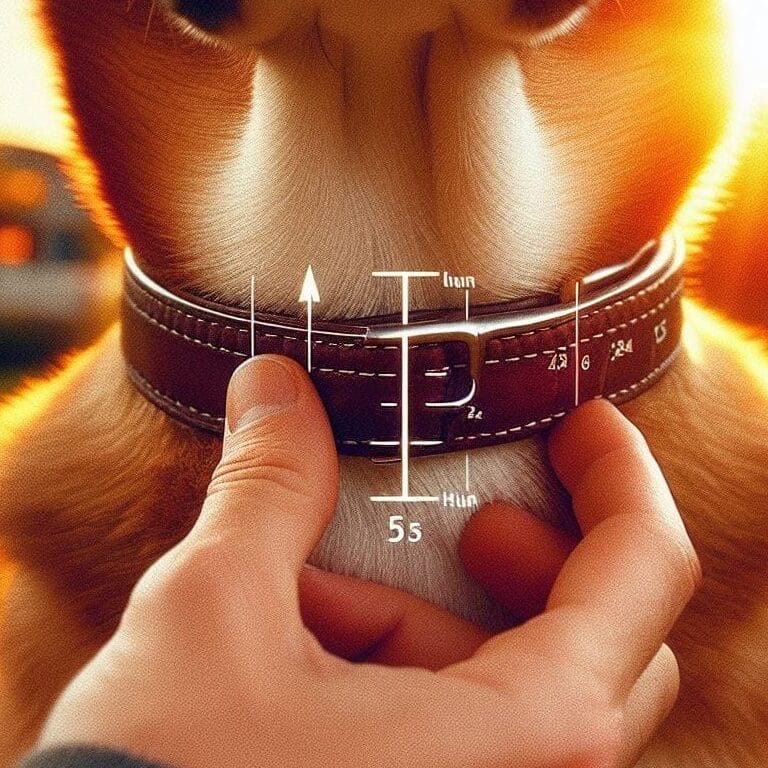If your dog has marks from their collar, you’ll want to know how to get rid of them. These marks happen because the collar rubs against their skin and can be uncomfortable. But don’t worry! There are simple ways to fix this issue and keep your furry friend happy.
What Are Collar Marks?
Collar marks are red or sore spots on your dog’s skin caused by their collar rubbing against it. They happen when the collar presses too hard in one spot for a long time, kind of like when you wear shoes that are too tight and get blisters.
Choosing a Better Collar
To avoid collar marks, pick a soft collar made of comfy materials like nylon or leather. Look for collars that feel smooth and gentle on your dog’s neck, and avoid ones that feel rough or too bulky.
Make Sure the Collar Fits Right
Check your dog’s collar regularly to make sure it’s snug but not too tight. You should be able to slide two fingers under the collar easily. If it’s too tight, it could rub against your dog’s skin and cause marks.
Want to know HOW TIGHT SHOULD A DOG COLLAR BE ? Check here
Change the Collar’s Position
Move the collar around your dog’s neck every now and then to give different areas a break. This helps prevent one spot from getting irritated from the collar pressing on it too much.
Give Your Dog Breaks from the Collar
Take off your dog’s collar for a little while each day, like when they’re hanging out at home or taking a nap. This lets their skin breathe and helps prevent irritation from the collar rubbing against it.
Keep the Collar Clean
Wash your dog’s collar regularly with some soap and water to get rid of dirt and germs. Rinse it well and let it dry completely before putting it back on your dog.
Use Other Ways to Identify Your Dog
If your dog doesn’t need to wear a collar all the time, try using a microchip or tags on a harness instead. These are less likely to rub against your dog’s skin and cause marks.
Watch for Signs of Irritation
Keep an eye out for any changes in your dog’s skin, like redness or swelling around the collar area. If you see anything unusual, take off the collar and check with your vet.
Try Healing Remedies
If your dog already has collar marks, try putting some soothing cream on them. Look for creams with ingredients like aloe vera or chamomile, which can help calm the skin and reduce irritation.
Talk to Your Vet
If the collar marks don’t go away or if your dog seems uncomfortable, it’s a good idea to talk to your vet. They can give you advice on how to treat the marks and make sure your dog stays healthy and happy.
Conclusion
Collar marks might be a pain, but there are things you can do to prevent them and help your dog feel better. Just make sure to choose a comfy collar, give your dog breaks from wearing it, and keep an eye on their skin. With a little bit of care, your furry friend can stay happy and mark-free!
FAQS: Frequently Ask Questions.
- How do you get rid of a dog’s collar rash?
- First, remove the collar to allow the area to breathe. Clean the affected area gently with mild soap and water. Apply a soothing, pet-safe ointment or cream recommended by your veterinarian. Ensure the collar is not too tight or causing further irritation.
2. What does collar chafing look like?
- Collar chafing appears as redness, irritation, or raw spots on the skin where the collar rubs against the dog’s neck. In severe cases, it may cause hair loss, scabbing, or bleeding.
3. What is a good home remedy for a dog’s sore?
- Home remedies like applying aloe vera gel, coconut oil, or oatmeal baths can provide relief for a dog’s sore. Always ensure the remedy is safe for dogs and consult with a veterinarian if the sore persists or worsens.
4. Should dogs sleep with collars on?
- It’s generally safe for dogs to sleep with collars on, but it’s essential to ensure the collar is comfortable and not too tight. Some owners prefer to remove collars at night for safety reasons.
5. Should I take my dog’s collar off every night?
- It’s not necessary to take off your dog’s collar every night, but some owners choose to do so for various reasons, such as comfort or safety concerns.



